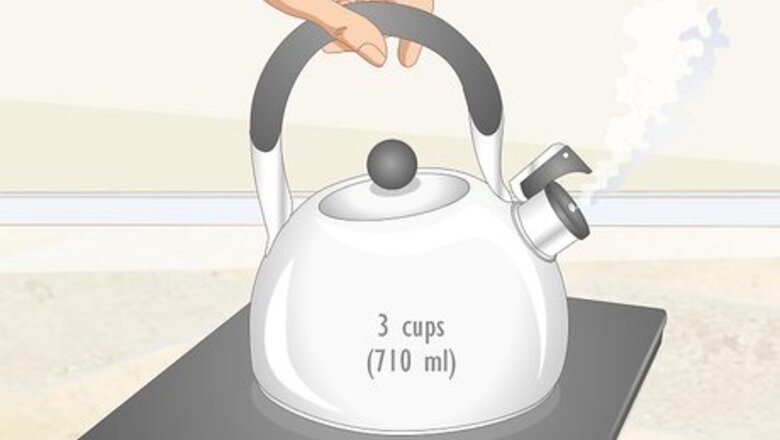
views
Filling the Bottle with Boiling Water
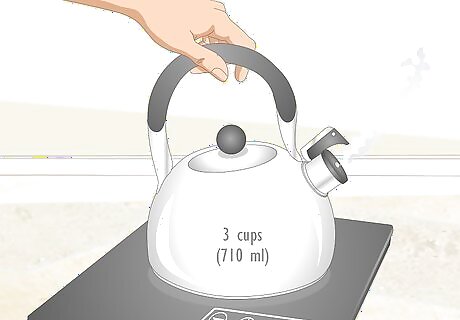
Boil 3 cups (710 mL) of water in a kettle. A wine bottle holds about 3 cups (710 mL) of liquid, so use this much water for each bottle you want to remove the label from. Pour the water into a kettle and bring it to a rolling boil. If you boil water in a saucepan, it will be much harder to pour it into the bottle later.
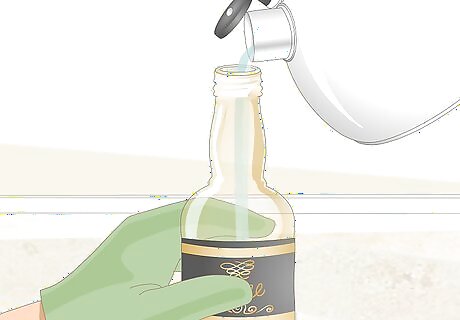
Pour the boiling water directly into the empty wine bottle. Stand up your wine bottle in the sink. Wear an oven glove on one hand and use this to hold the wine bottle steady. If your kettle has a narrow spout, you can slowly pour the boiling water directly into the bottle. If not, consider using a funnel to get the water down the bottleneck more easily. Be careful not to splash yourself or the label while you pour the water into the bottle.
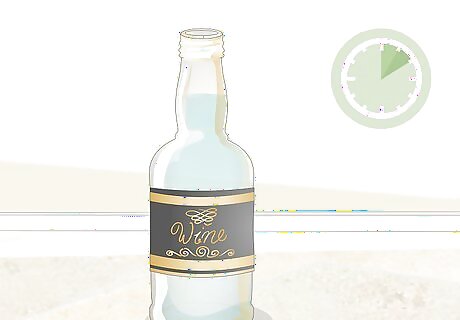
Wait for about 5 to 10 minutes while the water melts the adhesive. If your bottle is standing upright in your sink, simply leave it there for a few minutes. Allow about 5 to 10 minutes for the boiling water to melt the glue on the back of the label from the inside out.
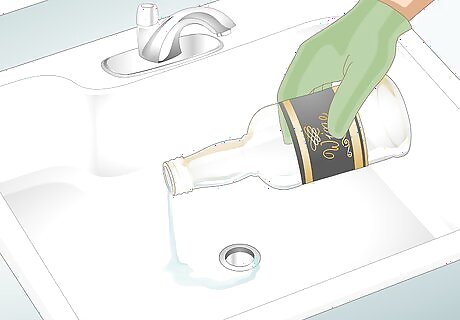
Tip the hot water out of the wine bottle. Slip on a pair of oven gloves. After leaving the water in the bottle for a few minutes, grab ahold of the wine bottle and carefully tip out the hot water into the sink. Use caution as the glass will be hot. If necessary, use a towel to soak up any drips from the glass or the label.
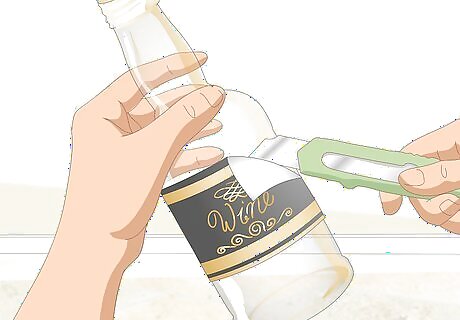
Peel the label off of the bottle using the edge of a utility knife. Once the water has been emptied out, use one hand to hold the bottle still. With the other hand, carefully slide the edge of a utility knife or razor blade underneath one corner of the wine label. Once it comes up, delicately lift off the rest of the label. The great part about this technique is that you won’t need to get the label wet. This is a great way to remove special labels that you’re worried about damaging. Be careful as you do this since the glass may still be hot.
Baking an Empty Bottle
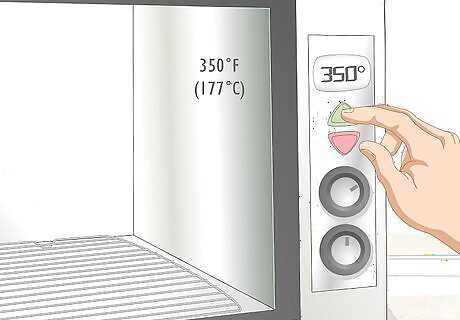
Preheat your oven to 350 °F (177 °C) degrees. Once you’ve finished off a bottle of wine, you can warm it up in the oven to melt the adhesive backing. Make sure your oven is empty, then set the temperature to 350 °F (177 °C). Before you preheat the oven, you can set your bottle inside to see if it stays put without rolling around.
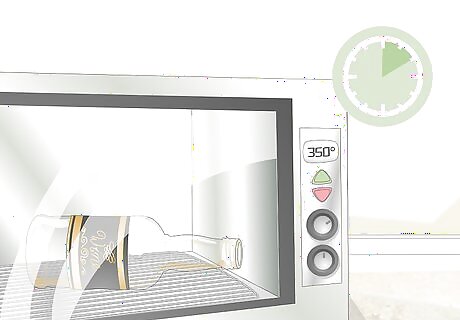
Warm the empty, uncorked bottle in the oven for 10 minutes. Lay the bottle down on the center rack, making sure it doesn’t roll around. Turn the bottle so that the label you want to preserve faces upwards. Wait about 10 minutes for the adhesive on the back of the label to melt. If necessary, set the bottle in a glass casserole dish to hold it in place.
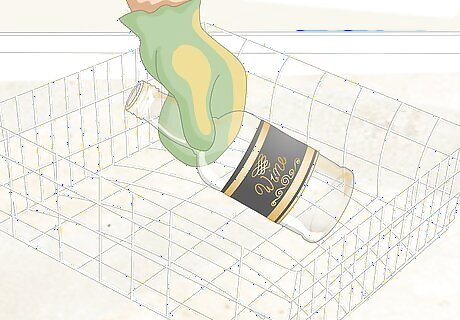
Wear oven gloves to transfer the bottle from the oven to a cooling rack. After about 10 minutes, put oven gloves on both of your hands and carefully remove the wine bottle from the oven. It will be hot, so use caution! Set it on a cooling rack so it doesn’t leave any burn marks on your work surface.
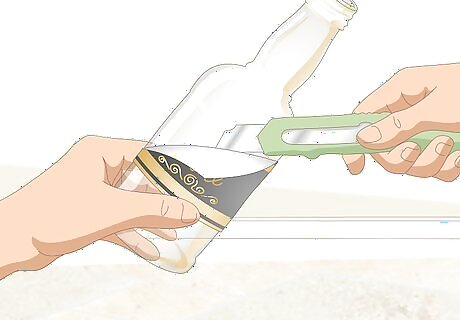
Use the edge of a utility knife to lift the label off of the bottle. Slide the edge of a utility knife or razor blade underneath one corner of the label. Once you do this, slowly and gently peel the label off of the glass. Use the knife to cut through any stubborn patches of adhesive. When you’re peeling back the label, use even, steady pressure to avoid ripping the paper. If the label won’t budge, just let the bottle cool down to room temperature. You can try another method later.
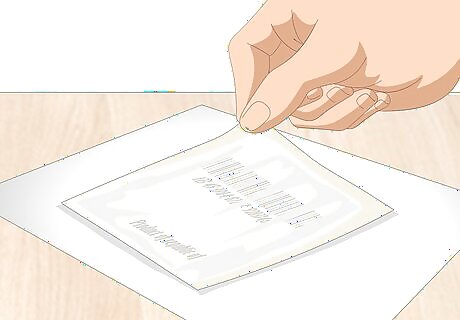
Air-dry the adhesive or preserve the sticky label on paper. Since the melted adhesive backing will be sticky, you can allow it to air-dry or place it onto another material. If you’d like to wait for the glue to dry, leave the label face-down on a sheet of parchment paper overnight. If you want to preserve it in a book or on a sheet of paper, place it onto the page while it’s still sticky and press down the edges to attach it.
Steaming off the Label
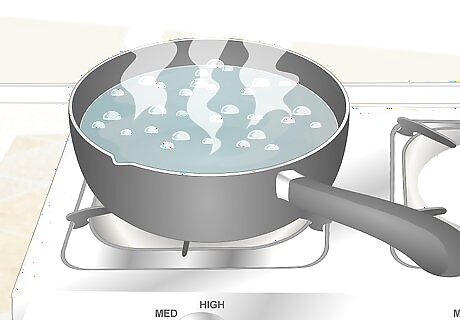
Bring a large pot of water to a rolling boil. Fill a large stockpot about 1/3 of the way up with water. Place this onto a stovetop burner and set the temperature to high. Wait about 15 or 20 minutes for the water to reach a rolling boil. If you have a 2-piece pasta pot, use the base to hold the water. You’ll be able to place the wine bottle in the colander part.
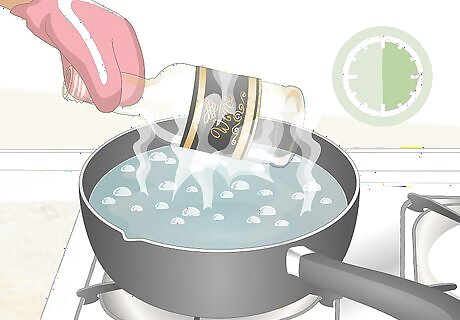
Hold the empty, uncorked bottle over the steam for at least 30 minutes. Wearing oven gloves, pick up the empty, uncorked bottle and hold it directly above the boiling water. Be careful not to allow the label to touch the water. Rotate the bottle every few minutes to expose the front and back of the label to the steam. Keep the water going at a steady simmer or rolling boil to keep generating steam. The steam will gently melt the adhesive backing on many wine labels. If you’re using a 2-piece pasta pot, lower the colander insert into the base. Then, stand the wine bottle up inside the colander. Unless you’re using a colander insert, you’ll need to manually hold the bottle over the water while it steams to avoid getting it wet.
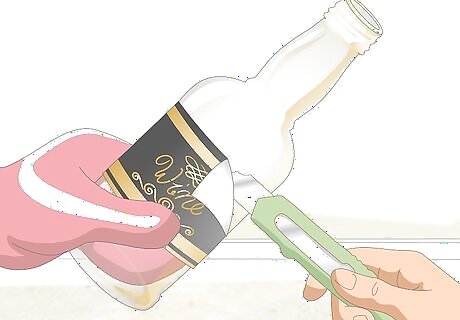
Peel off the label using a utility knife and oven gloves. The glass will be hot after having sat over the steam for a while, so make sure you’re wearing oven gloves. With the tip of a utility knife or razor blade, gently lift up one corner of the wine label. If it doesn’t budge, expose the bottle to the steam for another 10 or 15 minutes. Once it starts to come loose, slowly lift off the entire label. Once the adhesive has softened, the label should come off easily in one piece.
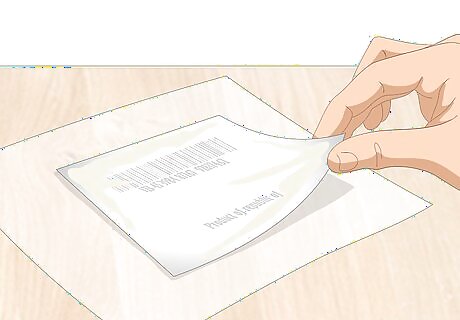
Air-dry the label on a sheet of parchment paper. If the label ends up being slightly damp after having been exposed to the steam, allow it to air-dry overnight. Set it on a sheet of parchment paper with the adhesive-side up. This will allow the glue to harden while the front of the label dries off. This is a useful technique to use on labels that you don’t want to submerge in water.
Soaking in Hot Water
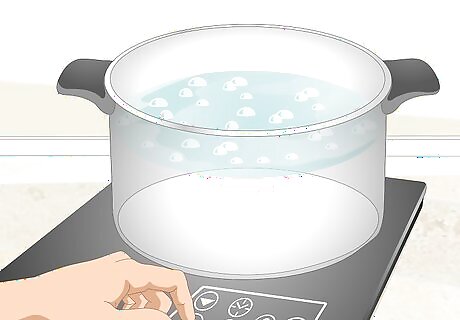
Fill a large pot with hot water. Boil enough water to fill a stockpot about 2/3 of the way up. Make sure you use enough water to completely cover the entire wine label once you set the bottle into the pot. You can use hot water from the tap instead, but it might not be as effective as just-boiled water.
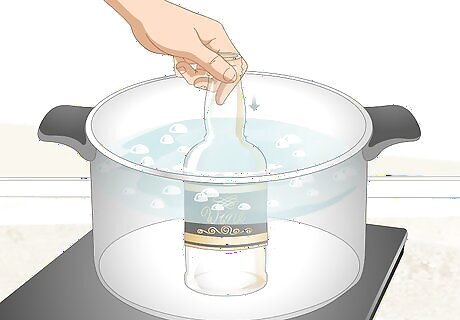
Submerge the empty, uncorked bottle in the hot water for 10 to 15 minutes. Stand up the bottle in the pot full of hot water. If necessary, add a little more water so that the top of the label is covered by the water. Leave it to soak for about 10 to 15 minutes or so. If desired, you can purchase a chlorinated soap from a wine store that’s designed to help to dissolve the adhesive. Be sure to follow the manufacturer’s instructions so you use the product correctly.
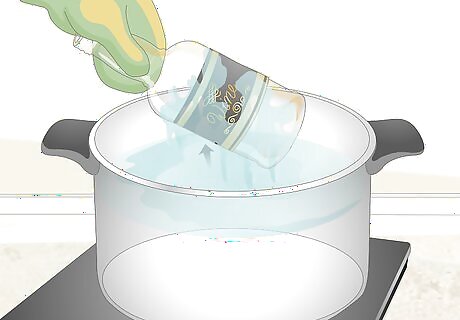
Remove the bottle from the hot water and dry it off. Put on a pair of rubber kitchen gloves to provide some grip and protect your hands from the hot water. Use caution as you lift out the wine bottle as it will be hot. Dry off the outside of the bottle with a towel.
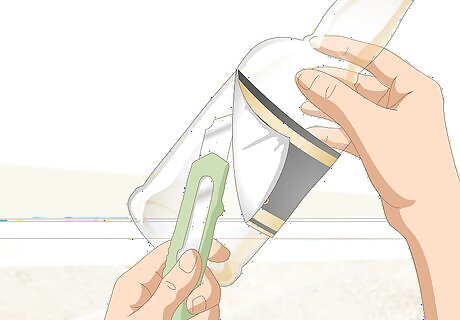
Peel off the damp label using the edge of a utility knife. Once the bottle is dry, slide the blade of a utility knife underneath one of the corners of the label. Once it starts to come loose, carefully peel up the rest of the label. Work slowly to avoid tearing the label. The hot water soak will have softened up the adhesive, so you should be able to preserve the label in one piece. Be careful not to rub or scratch the damp paper as it will easily get damaged.
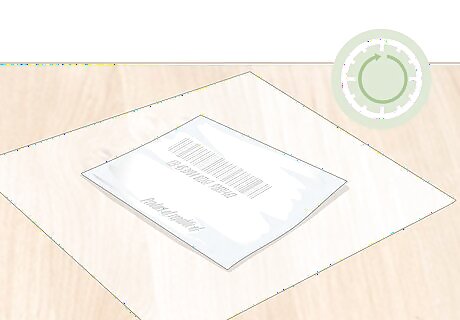
Allow the label to air-dry overnight. Set the damp label on a piece of parchment paper face-down, if you want the adhesive to dry. Or, set it glue-side down onto a sheet of regular paper if you’d rather mount the label or preserve it in a journal. The moist glue will adhere to the paper. Leave the paper to air-dry overnight. If the label curls up while it dries, you can press it flat within the pages of a heavy book once it’s totally dry.











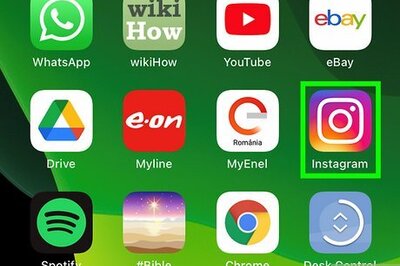







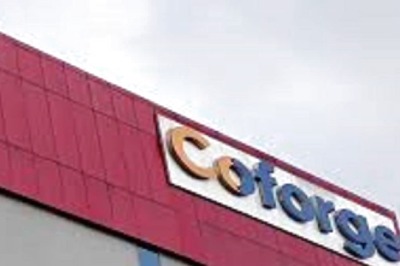
Comments
0 comment